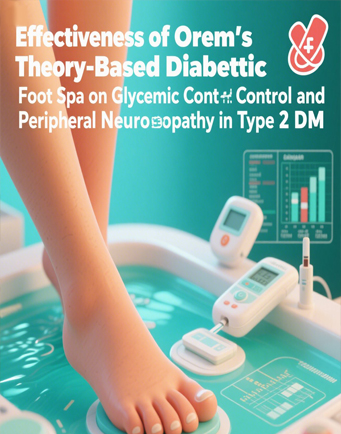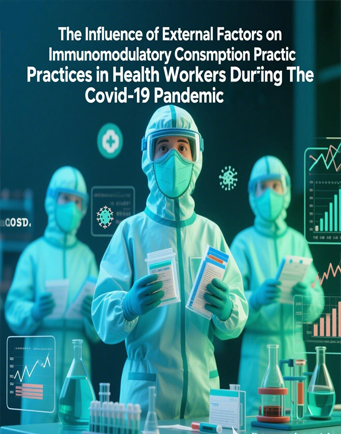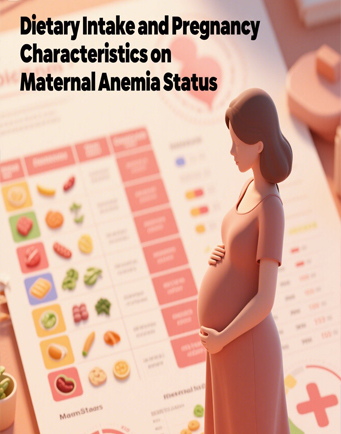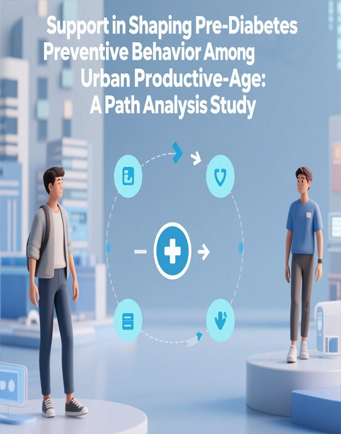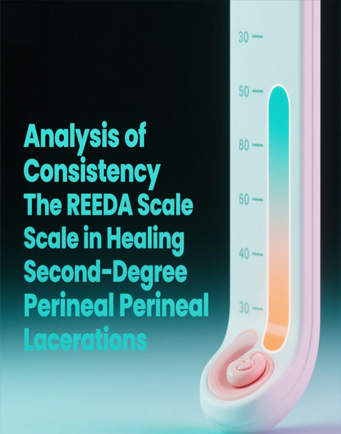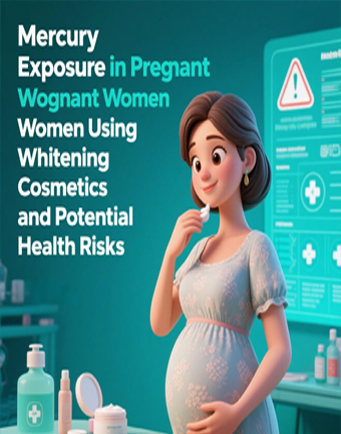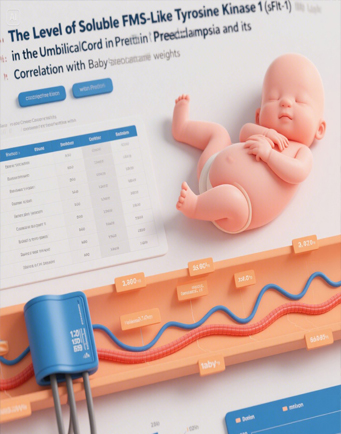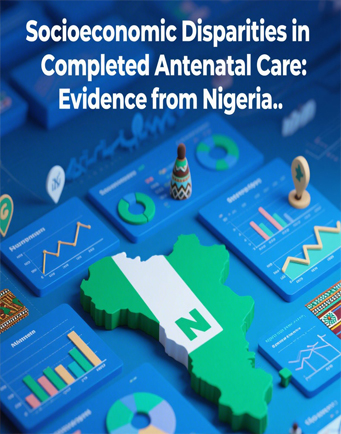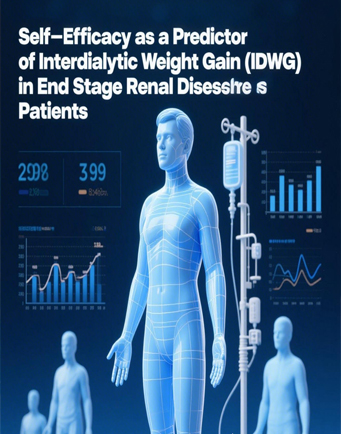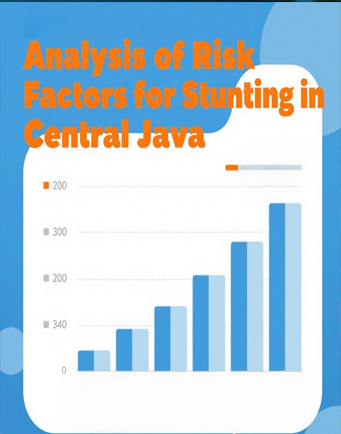Factors Affecting HIV Test in Public Health Center at Childbearing Age : A Cross – Sectional Analysis of Demographic and Health Survey in Indonesia
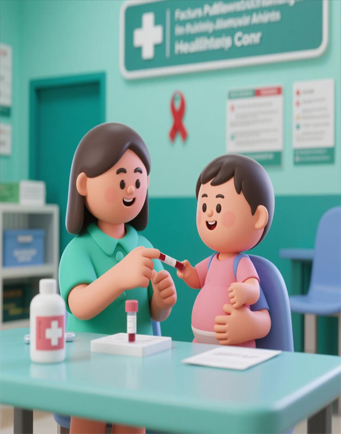
Downloads
The National HIV/AIDS Strategy predicts that 86% of people with HIV (PLHIV) worldwide will know their HIV status by 2022, the remaining 14% do not know that they have HIV and still need access to HIV testing services. As an effort to realize the Sustainable Development Goals and to reduce the incidence of HIV/AIDS by 2030, the Indonesian Ministry of Health needs to design and implement appropriate prevention mechanisms related to HIV/AIDS by conducting early detection of HIV, namely by empowering Community Health Centers to provide HIV testing services and counseling. This study aims to analyze the factors influencing HIV testing at Public Health Centers among women of childbearing age in Indonesia. This study uses a cross-sectional design with data from the 2017 Indonesian Demographic Health Survey (SDKI). Data were analyzed using the logistic regression. The variable in this study were demographic sharacteristics and HIV testing. HIV testing at Public Health Centers among childbearing age in Indonesia was at 32.5%. Several factors influencing HIV testing were identified, including region (OR: 1.22, 95% CI: 1.10 - 1.35), wealth index (OR: 0.82, 95% CI: 0.74 - 0.91), residence (OR: 0.82, 95% CI: 0.74 - 0.91), health insurance coverage (OR: 1.15, 95% CI: 1.04 - 1.27), level of knowledge (OR: 0.92, 95% CI: 0.83 - 1.01), stigma (OR: 0.81, 95% CI: 0.73 - 0.90), and AIDS knowledge source from health professionals (OR: 1.90, 95% CI: 1.70 - 2.12). To optimize HIV testing coverage, healthcare workers should enhance awareness by providing comprehensive HIV/AIDS education. This can be done through various media, such as posters, brochures, and community-involved seminars. The government must ensure HIV testing services are accessible in all regions, including rural and remote areas. Additionally, continuous monitoring and evaluation of HIV testing programs at Public Health Centers are necessary. This will help improve and tailor programs to meet community needs and address influencing factors effectively.
Adugna, D. G., & Worku, M. G. (2022). HIV Testing and Associated Factors Among Men (15-64 Years) in Eastern Africa: A Multilevel Analysis Using The Recent Demographic and Health Survey. BMC Public Health, 22(1), 1–9. https://doi.org/10.1186/s12889-022-14588-6
Andersson, G. Z., Reinius, M., Eriksson, L. E., Svedhem, V., Esfahani, F. M., Deuba, K., Rao, D., Lyatuu, G. W., Giovenco, D., & Ekström, A. M. (2020). Stigma Reduction Interventions in People Living with HIV to Improve Health-Related Quality of Life. The Lancet HIV, 7(2), e129–e140. https://doi.org/10.1016/S2352-3018(19)30343-1
Ante-Testard, P. A., Benmarhnia, T., Bekelynck, A., Baggaley, R., Ouattara, E., Temime, L., & Jean, K. (2020). Temporal Trends in Socioeconomic Inequalities in HIV Testing: an Analysis of Cross-Sectional Surveys From 16 Sub-Saharan African Countries. The Lancet Global Health, 8(6), e808–e818. https://doi.org/10.1016/S2214-109X(20)30108-X
Asresie, M. B., Worku, G. T., & Bekele, Y. A. (2023). HIV Testing Uptake Among Ethiopian Rural Men: Evidence from 2016 Ethiopian Demography and Health Survey Data. HIV/AIDS - Research and Palliative Care, 15, 225–234. https://doi.org/10.2147/HIV.S409152
Astiti, I. W., Yosep, I., & Hernawaty, T. (2024). Concept Analysis of Resilience in Adolescent Living with HIV: Review of Limitations and Implications. JURNAL INFO KESEHATAN, 22(1), 190–198. https://doi.org/10.31965/infokes.vol22.iss1.1632
Baderan, D. W. K., Rahim, S., Angio, M., & Salim, A. I. Bin. (2021). Diversity, Equity, and Wealth of Plant Species from the Potential Geosite of Fort Otanaha as a Pioneer for the Development of Geopark in Gorontalo Province. Al-Kauniyah: Jurnal Biologi, 14(2), 264–274. https://doi.org/10.15408/kauniyah.v14i2.16746
Bekele, Y. A., & Fekadu, G. A. (2020). Factors Associated with HIV Testing among Young Females; Further Analysis of The 2016 Ethiopian Demographic and Health Survey Data. PLoS One, 15(2), 1–10. https://doi.org/10.1371/journal.pone.0228783
Pradnyani, P. E., & Wibowo, A. (2019). The effects of socio-demographic characteristics on Indonesian women’s knowledge of HIV/AIDS: A cross-sectional study. Journal of Preventive Medicine and Public Health, 52(2), 109-114. https://doi.org/10.3961/jpmph.18.256
Fauk, N. K., Hawke, K., Mwanri, L., & Ward, P. R. (2021). Stigma and discrimination towards people living with HIV in the context of families, communities, and healthcare settings: a qualitative study in Indonesia. International journal of environmental research and public health, 18(10), 5424. https://doi.org/10.3390/ijerph18105424
Gray, C., Crawford, G., Lobo, R., & Maycock, B. (2019). Co-designing an Intervention to Increase HIV Testing Uptake with Women from Indonesia at-risk of HIV: Protocol for a Participatory Action Research Study. Methods and Protocols, 2(2), 1–12. https://doi.org/10.3390/mps2020041
Hamzah, K. Q. A., Mohd Zulkefli, N. A., & Ahmad, N. (2024). Health-seeking Behaviour During times of Illness Among Urban Poor Women: a Cross-Sectional Study. BMC Women’s Health, 24(1), 1–12. https://doi.org/10.1186/s12905-024-03178-w
Hidayati, I. R., Atmadani, R. N., Putra, D. S., & Sari, A. M. (2022). Edukasi pencegahan HIV AIDS di Lapas perempuan Kota Malang. Martabe: Jurnal Pengabdian Kepada Masyarakat, 5(1), 51–55. Retrieved from: http://jurnal.um-tapsel.ac.id/index.php/martabe/article/view/4643/0
Hutabarat, E. P., & Kismartini, K. (2019). Evaluasi Kebijakan Penanggulangan HIV/AIDS di Kota Semarang. Journal of Public Policy and Management Review, 8(2), 340-357. Retrieved from: https://ejournal3.undip.ac.id/index.php/jppmr/article/view/23665
Hutahaean, B. S. H., Stutterheim, S. E., & Jonas, K. J. (2023). Barriers and Facilitators to HIV Treatment Adherence in Indonesia: Perspectives of People Living with HIV and HIV Service Providers. Tropical Medicine and Infectious Disease, 8(3), 138. https://doi.org/10.3390/tropicalmed8030138
Ibrahim, K., Arifin, H., Fitri, S. U. R., Herliani, Y. K., Harun, H., Setiawan, A., & Lee, B. O. (2022). The Optimization of HIV Testing in Eastern Indonesia: Findings from the 2017 Indonesian Demographic and Health Survey. Healthcare (Basel, Switzerland), 10(3), 533. https://doi.org/10.3390/healthcare10030533
Ingala, D., Bakebua, W., Banzadio, F., Tshishi, D., Loando, A., Mboyo, A., & Gill, M. M. (2024). Optimizing HIV Case Identification among Children and Understanding Remaining Gaps in Pediatric HIV Testing in Kinshasa, DRC. BMC Pediatrics, 24, 10. https://doi.org/10.1186/s12887-023-04485-1
Jocelyn, Nasution, F. M., Nasution, N. A., Asshiddiqi, M. H., Kimura, N. H., Siburian, M. H. T., ... & Syahputra, R. A. (2024). HIV/AIDS in Indonesia: current treatment landscape, future therapeutic horizons, and herbal approaches. Frontiers in public health, 12, 1298297. https://doi.org/10.3389/fpubh.2024.1298297
Joseph, F., Jean Simon, D., Kondo Tokpovi, V. C., Kiragu, A., Toudeka, M. R. A. S., & Nazaire, R. (2024). Trends and Factors Associated with Recent HIV Testing among Women in Haiti: a Sross-Sectional Study using Data from Nationally Representative Surveys. BMC Infectious Diseases, 24(1), 1–18. https://doi.org/10.1186/s12879-023-08936-z
Kementerian Kesehatan Republik Indonesia. (2021). Development of HIV AIDS and Sexually Transmitted Diseases (PIMS) Quarter I January-June 2021. Kementerian Kesehatan Republik Indonesia
Khin, S. O., Hone, S., Lin, C., Comulada, W. S., Detels, R., & Lee, S. J. (2023). Factors Associated with Lifetime HIV Testing among Women in Four Southeast Asian Countries: Evidence from the Demographic and Health Surveys. International Journal of STD and AIDS, 34(7), 439–447. https://doi.org/10.1177/09564624231162417
Kidman, R., Waidler, J., & Palermo, T. (2020). Uptake of HIV testing among adolescents and associated adolescent-friendly services. BMC health services research, 20, 1-10. https://doi.org/10.1186/s12913-020-05731-3
Levy, J. A., Earnshaw, V. A., Milanti, A., Waluyo, A., & Culbert, G. J. (2023). A Qualitative Study of Healthcare Providers’ Attitudes toward Assisted Partner Notification for People with HIV in Indonesia. BMC Health Services Research, 23(1), 1–12. https://doi.org/10.1186/s12913-022-08943-x
Listiani, R., Dewi, K. R., Madani, J. F., & Syarif, S. H. (2023). The comparison of Health Insurance between Indonesia and other Middle-Income Countries. USADA NUSANTARA: Jurnal Kesehatan Tradisional, 1(2), 21-32. https://doi.org/10.47861/usd.v1i1.209
Martilova, D. (2020). Factors Affecting Adolescent Knowledge in HIV AIDS Prevention at SMAN 7 Pekanbaru City in 2018. JOMIS (Journal of Midwifery Science), 4(1), 63–68. https://doi.org/10.36341/jomis.v4i1.1072
Muhaji, I. (2021). The Indonesian Government’s Efforts to Improve Health Services and Facilities in Rural Areas Related to Health Laws. Journal La Sociale, 2(1), 48–52. https://doi.org/10.37899/journal-la-sociale.v2i1.306
Natasha, L. S., Dian, L., & Yekti, W. (2023). Analysis of Factors Explaining AIDS Cases in East Java Province Using the Geographically Weighted Logistic Regression (GWLR) Model. Jurnal Statistika Dan Aplikasinya, 7(1), 37–48. https://doi.org/10.21009/jsa.07104
NHAS. (2022). The Global HIV and AIDS Epidemic. National HIV/AIDS Strategy (NHAS). Retrieved from: https://www.hiv.gov/hiv-basics/overview/data-and-trends/global-statistics
Nshimirimana, C., Vuylsteke, B., Smekens, T., & Benova, L. (2022). HIV testing uptake and determinants among adolescents and young people in Burundi: a cross-sectional analysis of the Demographic and Health Survey 2016–2017. BMJ open, 12(10), e064052. https://doi.org/10.1136/bmjopen-2022-064052
Nursalam, N., Sukartini, T., Arifin, H., Pradipta, R. O., Mafula, D., & Ubudiyah, M. (2021). Determinants of the Discriminatory Behavior Experienced by People Living with HIV in Indonesia: A Cross-sectional Study of the Demographic Health Survey. The Open AIDS Journal, 15(1), 1–9. https://doi.org/10.2174/1874613602115010001
Pachena, A., & Musekiwa, A. (2022). Trends in HIV testing and associated factors among adolescent girls and young women in Zimbabwe: cross-sectional analysis of demographic and health survey data from 2005 to 2015. International Journal of Environmental Research and Public Health, 19(9), 5165. https://doi.org/10.3390/ijerph19095165
Pradnyani, P. E., Januraga, P. P., Mahmudah, & Wibowo, A. (2020). Peer Support and Access to Information as Predictors of HIV Testing among Indirect Female Sex Workers in Bali, Indonesia. HIV and AIDS Review, 19(3), 206–211. https://doi.org/10.5114/hivar.2020.97952
Purwani, N. L. P. S. H., Yuliana, Y., & Wardana, I. N. G. (2020). Faktor yang Berhubungan dengan Perilaku Tes HIV pada Ibu Hamil di Puskesmas Abiansemal I. Intisari Sains Medis, 11(3), 1210–1215. https://doi.org/10.15562/ism.v11i3.696
Riono, P., & Challacombe, S. J. (2020). HIV in Indonesia and in Neighbouring Countries and its Social Impact. Oral Diseases, 26(S1), 28–33. https://doi.org/10.1111/odi.13560
Sabin, L. L., Semrau, K., Desilva, M., Le, L. T. T., Beard, J. J., Hamer, D. H., Tuchman, J., Hammett, T. M., Halim, N., Reuben, M., Mesic, A., & Vian, T. (2019). Effectiveness of Community Outreach HIV Prevention Programs in Vietnam: A Mixed Methods Evaluation. BMC Public Health, 19(1), 1–17. https://doi.org/10.1186/s12889-019-7418-5
Sari, N. L. (2022). Determinan Perilaku Pemeriksaan HIV pada Wanita Penjaja Seks Langsung di Eks Lokalisasi. Jurnal Kesehatan, 13(1), 8-15. https://doi.org/10.26630/jk.v13i1.2662
Serag, H., Clark, I., Naig, C., Lakey, D., & Tiruneh, Y. M. (2022). Financing benefits and barriers to routine HIV screening in clinical settings in the United States: a scoping review. International Journal of Environmental Research and Public Health, 20(1), 457. https://doi.org/10.3390/ijerph20010457
Sianturi, E. I., Perwitasari, D. A., Islam, M. A., & Taxis, K. (2019). The Association between Ethnicity, stigma, Beliefs about Medicines and Adherence in People Living with HIV in a Rural Area in Indonesia. BMC Public Health, 19(1), 1–8. https://doi.org/10.1186/s12889-019-6392-2
Siswanto, S., Hendarwan, H., Kusumawardhani, N., & Handayani, L. (2020). Bunga Rampai Kinerja Pembangunan Kesehatan Indonesia: Tantangan, Masalah, dan Solusi. Jakarta: Badan Penelitian dan Pengembangan Kesehatan.
Suantari, D. (2021). Misconceptions and Stigma Against People Living with HIV/AIDS: A Cross-Sectional Study from the 2017 Indonesia Demographic and Health Survey. Epidemiology and Health, 43, 1–7. https://doi.org/10.4178/epih.e2021094
Sutrasno, M. A., Yulia, N., Rumana, N. A., & Fannya, P. (2022). Literature Review Gambaran Karakteristik Pasien HIV/AIDS di Fasilitas Pelayanan Kesehatan di Indonesia. Jurnal Manajemen Informasi Dan Administrasi Kesehatan, 5(1), 50–59. Retrieved from: http://journal.univetbantara.ac.id/index.php/jmiak-rekammedis/article/view/2159
Tampubolon, R. (2018). A Form of Support from The Health Center as an Effort to Prevent The Transmission of HIV AIDS to Women Sex Workers. Jurnal Kesehatan, 9(1), 105. https://doi.org/10.26630/jk.v9i1.749
Truong, H. H. M., Mocello, A. R., Ouma, D., Bushman, D., Kadede, K., Ating’a, E., Obunge, D., Bukusi, E. A., Odhiambo, F., & Cohen, C. R. (2021). Community-based HIV Testing Services in an Urban Setting in Western Kenya: a Programme Implementation Study. The Lancet HIV, 8(1), e16–e23. https://doi.org/10.1016/S2352-3018(20)30253-8
Umam, M. K., Hemchayat, M., & Wetasin, K. (2019). The Gender Differences in Sexual Behavior, HIV/AIDS Knowledge and Perceptions about HIV/AIDS among University Students in Indonesia. Proceedings of The IRES 27th International Conference, January, 23–27.
Umar, F., & Erni. (2019). Faktor yang Berhubungan dengan Penerimaan Tes HIV Oleh Ibu Hamil. PROMOTIF: Jurnal Kesehatan Masyarakat, 9(0451), 137–142. https://www.jurnal.unismuhpalu.ac.id/index.php/PJKM/article/view/597
Van Heuvel, Y., Schatz, S., Rosengarten, J. F., & Stitz, J. (2022). Infectious RNA: Human Immunodeficiency Virus (HIV) Biology, Therapeutic Intervention, and the Quest for a Vaccine. Toxins, 14(2), 1–26. https://doi.org/10.3390/toxins14020138
Virdausi, F. D., Efendi, F., Kusumaningrum, T., Adnani, Q. E. S., McKenna, L., Ramadhan, K., & Susanti, I. A. (2022). Socio-Economic and Demographic Factors Associated with Knowledge and Attitude of HIV/AIDS among Women Aged 15–49 Years Old in Indonesia. Healthcare (Switzerland), 10(8), 1545. https://doi.org/10.3390/healthcare10081545
Viridula, E. Y., Purnani, W. tri, Febriyanti, D., & Fadila, A. nuril. (2021). HIV/AIDS Prevention Efforts in Female Sex Workers (WPS) at the Sexually Transmitted Infection (STI) Clinic. Jurnal Bidan Pintar, 2(1), 239–254. https://doi.org/10.30737/jubitar.v2i1.1610
Wardojo, S. S. I., Huang, Y.-L., & Chuang, K.-Y. (2021). Determinants of The Quality of Life amongst HIV Clinic Attendees in Malang, Indonesia. BMC Public Health, 21, 1272. https://doi.org/10.1186/s12889-021-11321-7
WHO. (2021). World Health Statistics 2021 : Monitoring Health for The SDGs, Sustainable Development Goals. Geneva : WHO. Retrieved from: https://digitallibrary.un.org/record/3935247?v=pdf
Worku, M. G., Teshale, A. B., & Tesema, G. A. (2022). Prevalence and Associated Factors of HIV Testing among Young (15–24) Women in Eastern Africa: a Multilevel analysis of Demographic Health Survey Data (2008-2018). Archives of Public Health, 80, 117. https://doi.org/10.1186/s13690-022-00879-2
Wulandari, & Purba, B. (2020). Analysis of Village Government Programs in Efforts to Improve Community Welfare in Manunggal Village, Labuhan Deli District, Deli Serdang Regency. Publik Reform, 6, 36-47. Retrieved from: https://jurnal.dharmawangsa.ac.id/index.php/jupublik/article/download/1245/1043
Copyright (c) 2025 JURNAL INFO KESEHATAN

This work is licensed under a Creative Commons Attribution-NonCommercial-ShareAlike 4.0 International License.
Copyright notice
Ownership of copyright
The copyright in this website and the material on this website (including without limitation the text, computer code, artwork, photographs, images, music, audio material, video material and audio-visual material on this website) is owned by JURNAL INFO KESEHATAN and its licensors.
Copyright license
JURNAL INFO KESEHATAN grants to you a worldwide non-exclusive royalty-free revocable license to:
- view this website and the material on this website on a computer or mobile device via a web browser;
- copy and store this website and the material on this website in your web browser cache memory; and
- print pages from this website for your use.
- All articles published by JURNAL INFO KESEHATAN are licensed under the Creative Commons Attribution 4.0 International License. This permits anyone to copy, redistribute, remix, transmit and adapt the work provided the original work and source is appropriately cited.
JURNAL INFO KESEHATAN does not grant you any other rights in relation to this website or the material on this website. In other words, all other rights are reserved.
For the avoidance of doubt, you must not adapt, edit, change, transform, publish, republish, distribute, redistribute, broadcast, rebroadcast or show or play in public this website or the material on this website (in any form or media) without appropriately and conspicuously citing the original work and source or JURNAL INFO KESEHATAN prior written permission.
Permissions
You may request permission to use the copyright materials on this website by writing to jurnalinfokesehatan@gmail.com.
Enforcement of copyright
JURNAL INFO KESEHATAN takes the protection of its copyright very seriously.
If JURNAL INFO KESEHATAN discovers that you have used its copyright materials in contravention of the license above, JURNAL INFO KESEHATAN may bring legal proceedings against you seeking monetary damages and an injunction to stop you using those materials. You could also be ordered to pay legal costs.
If you become aware of any use of JURNAL INFO KESEHATAN copyright materials that contravenes or may contravene the license above, please report this by email to jurnalinfokesehatan@gmail.com
Infringing material
If you become aware of any material on the website that you believe infringes your or any other person's copyright, please report this by email to jurnalinfokesehatan@gmail.com.



